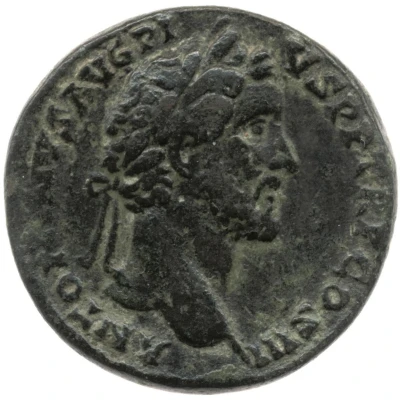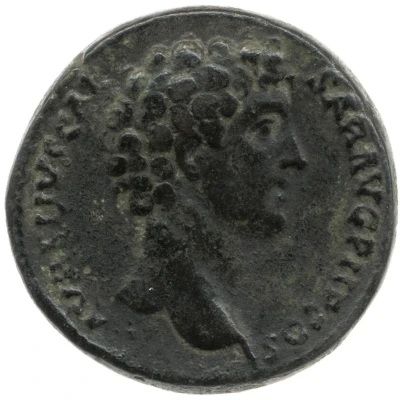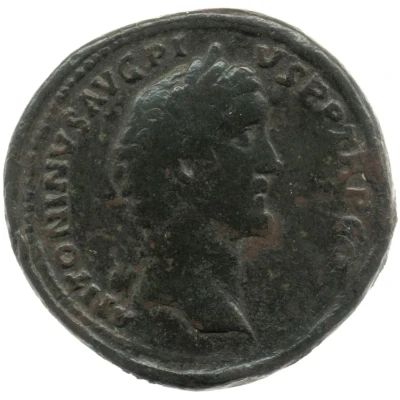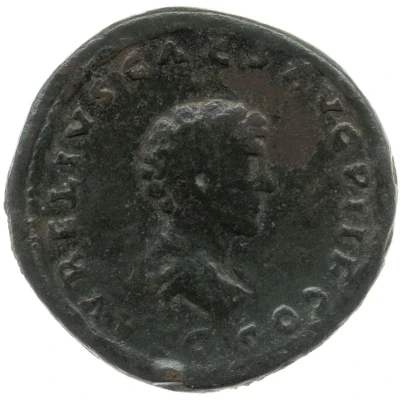
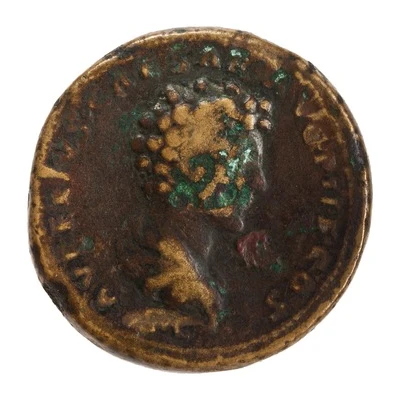

© American Numismatic Society (ANS)
Sestertius - Antoninus Pius and Marcus Aurelius AVRELIVS CAESAR AVG PII F COS S C
| Bronze | 24.6 g | 33.5 mm |
| Issuer | Rome › Roman Empire (27 BC - 395 AD) |
|---|---|
| Emperor | Antoninus Pius (Titus Aelius Hadrianus Antoninus Pius) (138-161) |
| Type | Standard circulation coin |
| Years | 140-144 |
| Value | 1 Sestertius = ¼ Denarius |
| Currency | Denarius, Reform of Augustus (27 BC – AD 215) |
| Composition | Bronze |
| Weight | 24.6 g |
| Diameter | 33.5 mm |
| Shape | Round (irregular) |
| Technique | Hammered |
| Orientation | Medal alignment ↑↑ |
| Demonetized | Yes |
| Updated | 2024-10-06 |
| Numista | N#261720 |
|---|---|
| Rarity index | 97% |
Reverse
Bust of Marcus Aurelius, bare-headed, draped, right.
Script: Latin
Lettering: AVRELIVS CAESAR AVG PII F COS S C
Translation:
Aurelius Caesar, Augusti Pii Filius, Consul. Senatus Consultum.
[Marcus] Aurelius, Caesar, son of emperor (Augustus) [Antoninus] Pius, consul. Decree of the senate.
Comment
Mass varies: 21.02–28.2 g;Diameter varies: 31.89–34.5 mm;
Example of this type:
American Numismatic Society (ANS)
Source:
Online Coins of the Roman Empire (OCRE)
Interesting fact
One interesting fact about this coin is that it features a rare combination of two emperors, Antoninus Pius and Marcus Aurelius, on the same coin. This was a common practice during the Roman Empire, known as "co-rule," where two emperors would rule together, often as a way to transition power from one emperor to the next. This particular coin is a sestertius, a type of Roman coin that was worth one-fourth of a denarius, the standard unit of currency at the time. The coin's design features the busts of both emperors on opposite sides, with Antoninus Pius on the obverse (front) and Marcus Aurelius on the reverse (back). This coin is a valuable piece of history, providing insight into the political and economic systems of the Roman Empire during the 2nd century AD.
